Commonly referred to as “e-bikes,” electric bicycles (also known as “electric-assist bicycles”) look and function similarly to traditional bicycles but are powered by a small electric motor. Are electric bikes allowed on bike paths? Here’s everything you need to know about electric bikes and bike paths. With the help of the motor, the rider is given a helping hand by way of increased propulsion for the wheels. Most e-bikes fall into one of two categories: those with pedal-assist motors, which are activated by pedaling and shut off after the rider reaches a predetermined top speed, or those with throttle-on-demand motors, which can drive the bike even if the user is not pedaling. Since these vehicles have motors, many state and local governments have trouble deciding whether to regulate them as bicycles or as motorized vehicles like mopeds and motorcycles. The method used to categorize them will ultimately determine how they are controlled. Motorized vehicles are often not allowed on shared-use trails, with the exception of personal mobility devices like electric wheelchairs.

Motorized bicycles have been met with some resistance from the cycling community, but they are quickly gaining favor. Sales of e-bikes in the United States increased 95% in the past year, reaching $65 million in 2016–17. This expansion is taking place despite the fact that e-bikes are more expensive than conventional bicycles. Of course, it’s not just regular folks who are buying in. A quarter of the bikes in the Birmingham Bikeshare fleet are electric bikes, and e-bikes are now available from dockless bike-share companies in a number of other U.S. cities as well. Fans of e-bikes say that the bikes may help people get around obstacles like hills, long distances, and carrying children or cargo without breaking a sweat. Because of this, e-bikes can replace other transportation options, such as vehicles, allowing individuals to go on excursions they previously wouldn’t have considered taking by bike.
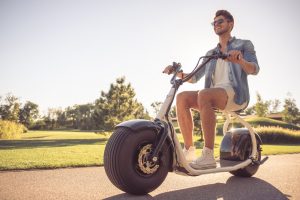
Compared to gas-powered bikes, e-bikes are undeniably more peaceful and eco-friendly. Pedal-assist bikes may not offer the same health benefits as traditional bicycles, but they can help hesitant or inactive people take their first steps into the world of bicycling. Are electric bikes allowed on bike paths? And now they’re as reliable and practical as more traditional bikes. However, they’re not allowed on bike paths and trails. Most importantly, e-bikes can provide those with physical disabilities with new leisure and transit opportunities. According to a 2017-18 survey of e-bike users conducted by the National Institute of Transportation and Communities (NITC), e-bikes are popular not just among young, healthy adults but also with those who are older and those who have physical limitations.
Differentiating between types of electric bicycles

In order to distinguish e-bikes from motorcycles and scooters, the bicycle industry has come up with a three-tiered classification scheme. The method takes into account the bicycle’s power source and the maximum speed at which it can be pushed. Class, I e-bikes have motors that only assist while the user is cranking the pedals. At 20 miles per hour (mph), the motor stops providing assistance, and the rider must rely on their own strength to continue moving forward. Class II e-bikes have a throttle that, when used, can help the rider reach speeds of up to 20 mph (with no pedaling at all). When you reach 20 mph, the boost stops working, and you’ll have to rely on your own strength to continue riding. Class III e-bikes, in contrast to Class I e-bikes, have a top aided speed of 28 miles per hour while pedaling. A speedometer is included as well. Where electric bikes have been permitted off-road on multi-use trails, they have typically been classified as Class I or Class II vehicles, making them subject to the same regulations as regular bicycles.
Rules for Electric Bikes
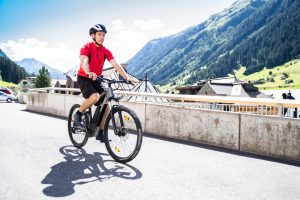
The Consumer Product Safety Commission (CPSC) is the federal agency in charge of regulating e-bikes, specifically low-speed e-bikes with a maximum throttle speed of 20 miles per hour. Unfortunately, the use of e-bikes is not included in the CPSC’s regulation of e-bikes. Low-speed e-bikes are defined by the Consumer Product Safety Commission (CPSC) as “a two- or three-wheeled vehicle with fully operable pedals and an electric motor of fewer than 750 watts (1 horsepower), whose maximum speed on a paved level surface when ridden by an operator weighing 170 pounds when powered solely by such a motor, is less than 20 mph.” Other federal, state, and local rules, such as those governing mopeds, scooters, and motorcycles, may apply to electric bikes that exceed the low-speed definition.
Electrical Bicycles on Shared Pathways
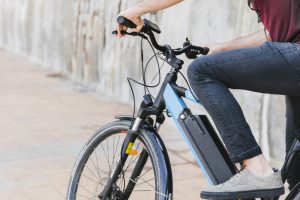
Unless a municipality in Colorado opts to set its own restrictions, the state legislation applies uniformly to all of the states, classifying e-bikes as bicycles. Due to this shift in state policy, the City of Boulder authorized Class I and II e-bikes on select hard-surface trails for a year-long trial program in 2014 to learn more about e-bike riders’ habits and whether or not they were compatible with other non-motorized activities. The City gathered information about reported crashes and near-misses using e-bikes during the pilot program’s implementation. They also reached out to the public to get their thoughts and disseminate information about the study. The City’s research showed that just a small percentage of trail users were e-cyclists and that there were no reported bike collisions during the time period covered by the study. The City of Boulder, Colorado, has decided that paved trails within the City are safe enough for e-bikes to be used, while unpaved trails within open-space regions are off-limits to them. Downloadable trail maps for usage with e-bikes may be found on the City’s website. The City also works with a trail advocacy group to teach trail manners to the public.
A number of other communities, encouraged by Boulder’s example, have begun testing out e-bikes on trails.
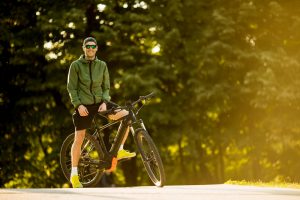
In 2015, Park City, Utah, conducted a pilot program that restricted Class I and II e-bikes to eight-foot-wide asphalt paths within city borders. The trailheads in the City have been outfitted with signs that specify whether or not electric bicycles are permitted. The City conducted trail counts, field observations, intercept surveys, speed counts, and reviewed police reports as part of the data-collection portion of the pilot; and conventional media, a dedicated website, and an online survey made up the outreach-and-education portion. All hard-surface multiuse trails within the city limits are now open to electric bikes, while soft-surface trails bigger than five feet now have a 15 mph speed limit for all users. The City’s website features a map of paths suitable for e-bikes.
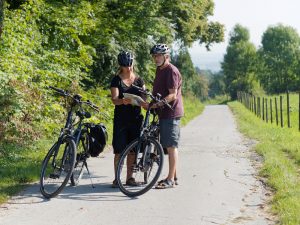
In addition, Summit Bike Share, a bike share system with only pedal-assist e-bikes, became available to Park City residents aged 18 and up in 2017. A combination of factors—including Seattle’s mountainous terrain, the availability of dockless bike-share e-bikes, and revisions to state legislation allowing e-bikes on multiuse paths—led to the selection of five trails for the Class I and II e-bike trial period. The pilot program started in August 2018 and lasted for a year; the outcomes are still being evaluated (as of November 2019). Rules for the trail, which may include a 15 mph speed limit, will be enforced jointly by Seattle Parks and Seattle Police.
Can electric bikes go on the road?

Several municipalities have authorized electric bikes on multiuse paths without initial conducting a pilot study. Class I and II e-bikes are now legal to ride on Boise’s streets, bike lanes, sidewalks, and the Boise River Greenbelt, according to a 2017 revision of the City’s bicycle legislation. In the Boise Foothills, electric bikes are restricted to usage by people with disabilities. Are electric bikes allowed on bike paths? In January of that same year, the city council of Tempe, Arizona, passed an ordinance that allowed people to ride electric bikes on multiuse paths up to 20 miles per hour. Electric bicycles must stop or decelerate to 5 mph when passing pedestrians or horses.

Riders must be at least 16 years old, and those between the ages of 16 and 18 must wear protective headgear at all times when riding. Scottsdale, Arizona, has been considering new parking and operation regulations for dockless bike share and electric scooters due to the City’s recent surge of these types of vehicles. Shared use paths now permit Class 1 and 2 bikes and e-scooters as of the end of 2018. In January of 2019, Arizona became the first state to legally recognize a three-tiered classification system for electric bicycles. As part of the new legislation, e-bikes with a maximum speed of 20 mph can be ridden on all trails across the state. However, municipalities are free to determine whether or not to allow their use on trails inside their borders.
Security, Quickness, and User Disagreements

Safety issues, particularly those linked to speed, are at the forefront of the debate over whether or not to allow e-bikes on trails. Motorized cyclists are stereotyped as reckless speed demons that will ruin the route experience for everyone. While e-bike riders travel faster than regular bike riders on average (14 mph vs. 8.7 mph), most e-bike riders keep their speeds considerably below 20 mph, according to a Swiss study. Furthermore, speeding is not an issue that is exclusive to e-bikes. People who utilize trails frequently admit to being surprised by bikers who zoom by them at excessive speeds. On multiuse trails, where many different types of people must coexist in a relatively small area, disputes between users are inevitable and, unfortunately, to be expected. Maintaining safety on a path is generally best achieved by enforcing good behavior than tightly restricting the equipment used, as is the case with other forms of user disputes. If electric bikes are permitted on a route, riders must follow all trail rules and etiquette guidelines in effect at the time.
Perilous Velocity

As a group, mountain bikers travel at a steady clip. Some people are riding faster than others, but overall, most people seem to be going at a comparable rate. E-bikers have altered the climbing and descending strategies of traditional riders. They are less compatible with the other trail users and may even pose a threat to them because they can ride quickly, even at steep inclines. Because of the rush, they get from riding their e-bikes, some riders may become careless. As stopping distances grow, the likelihood of collisions rises when traveling at higher speeds. When pedaling alone, it also requires a great deal of time and effort to get into shape to ride quickly. By taking baby steps, you’ll gain confidence on your bike in no time. You’ve spent the day learning to navigate expertly in a challenging and variable environment. Incorrect cyclists can now go greater distances and at a faster pace with the addition of motors to their bikes.
Confrontation over trail use
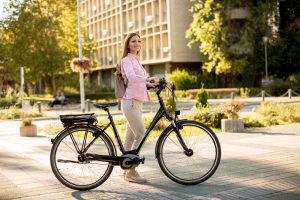
It’s like allowing motorcycles into a national park; it doesn’t do mountain bikers any favors as a collective. Bike riders had to work hard to earn the respect of other route users like hikers and horse riders. Increases in the speed of e-mountain bikes could spell disaster for trail access in several areas. It’s true that resolving disagreements about shared trails may be challenging, and it’s also true that inexperienced riders on bikes with more power than they can handle aren’t likely to help matters. Many new riders may not know or observe the latest trail etiquette and rules, which only makes things more dangerous.
conclusion
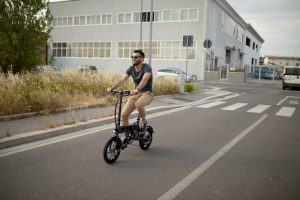
Are electric bikes allowed on bike paths? Is it safe to ride an electric bike on a bike path? Over the past five years, there has been a dramatic increase in the popularity of bicycles with electric assistance. In spite of their indistinguishable appearance from “normal” bicycles, today’s e-bikes are equipped with powerful batteries and electronics that can detect when the user needs assistance climbing a hill, overcoming headwinds, or starting off from a halt. Despite the fact that e-bikes have been around for a while, the current development of smaller, lighter, cheaper, and longer-range batteries has greatly increased the usefulness, popularity, and affordability of these machines. E-bikes are popular among a wide range of people due to their ability to help those with less-than-ideal fitness levels, those who need to carry greater loads on a regular basis, and parents who need to transport their children.
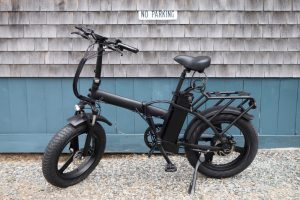
The addition of electric bikes to the fleets of numerous bike-sharing systems in Pioneer Valley, the LimeBike network, and elsewhere in the system has increased the popularity of bike-share as a mode of transportation for regular use. The regulations in Massachusetts pertaining to bicycles with motors were unfortunately drafted back when mopeds and scooters were the norms, long before the introduction of modern electric bicycles. The potential for conflict and confusion with existing legislation increases as e-bike sales continue to rise and bike share operators seek to integrate these into their fleets.
